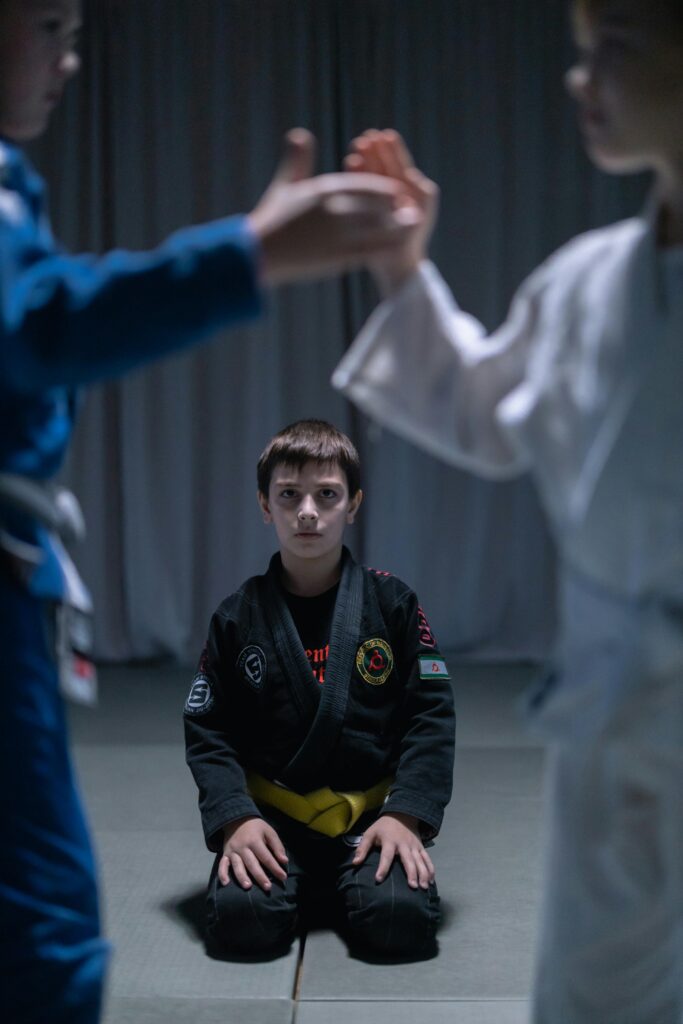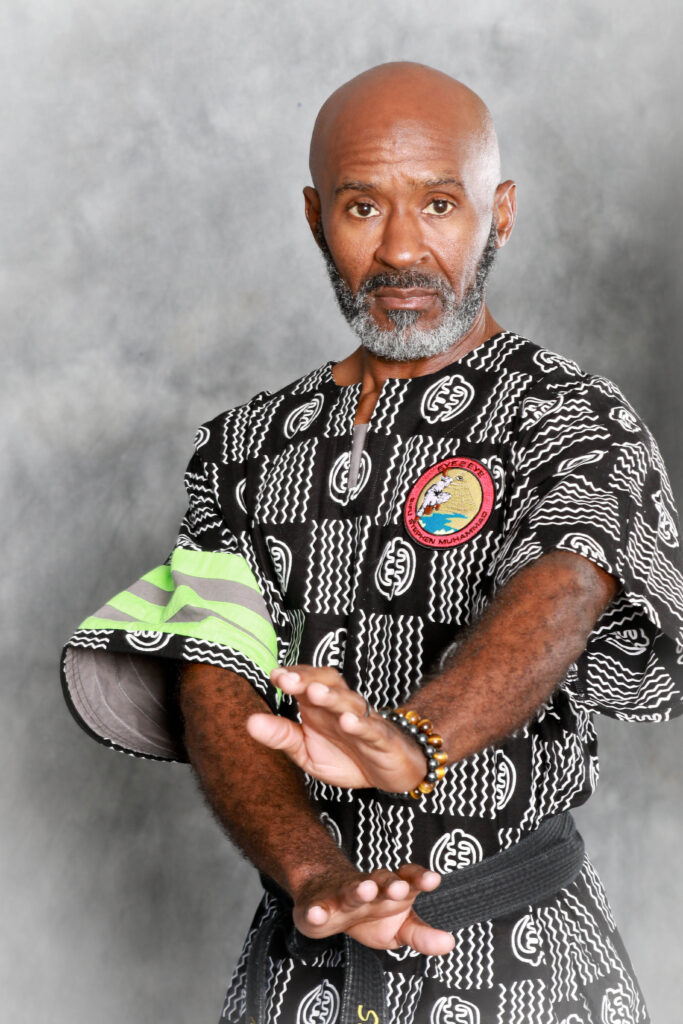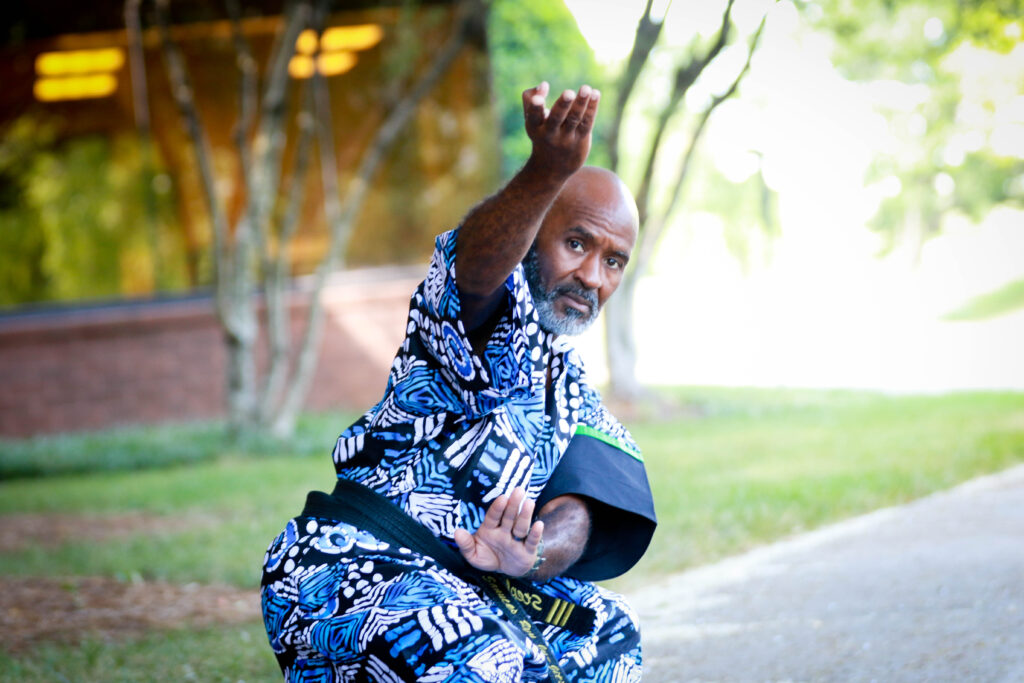When you step onto the mat for Aikido training, what you wear makes a real difference. An Aikido Gi isn’t just about looking the part; it’s about feeling comfortable, moving freely, and respecting the traditions of the art.
A good Gi can elevate your practice and, honestly, make you feel more connected to the spirit of Aikido.
Today, I’m going to walk you through everything you need to know about choosing the right Aikido Gi, keeping it in good shape, and why Eye2Eye’s custom Hakama might just be what you’re looking for.
What is an Aikido Gi?
An Aikido Gi is the traditional uniform that practitioners wear during training. Unlike other martial arts uniforms, it’s designed to accommodate the flowing, circular movements that Aikido emphasizes.
The fabric is lighter than a Judo Gi, which makes it easier for those graceful rolls and throws that are the hallmark of Aikido practice.
The history behind the Gi adds a layer of respect to each training session. It’s not just about functionality; it’s about connecting to the roots of this Japanese martial art.
And believe me, slipping into a well-made Gi can really shift your mindset—making you feel more grounded in the tradition every time you step onto the mat.
Differences Between Aikido Gi and Other Martial Arts Uniforms
You might be wondering, why not just use any old martial arts uniform? Well, the differences can impact your practice more than you might think.
A Judo Gi, for example, is thicker and made for grappling, with extra weight that can feel restrictive during Aikido’s sweeping movements. Karate Gis are lighter, but often too stiff for Aikido’s fluid style.
An Aikido Gi is designed to be a balance between flexibility and durability. It’s lighter than a Judo Gi but still strong enough to handle the regular pulling and gripping that comes with training.
This balance makes it the perfect choice for both beginners and seasoned practitioners. When you’re moving through a sequence, the last thing you want is a uniform that holds you back.
How to Choose the Right Aikido Gi for Your Practice
When it comes to finding the right Aikido Gi, you want to consider the material, the fit, and how much you’re willing to spend. It’s worth getting this right because a well-chosen Gi can last for years, even with regular practice.
Understanding Fabric and Durability
The fabric of your Gi matters, especially if you train often. Cotton is a popular choice because it’s breathable and softens over time, but it can shrink if you’re not careful with washing.
A cotton-polyester blend is a little more forgiving in that department and offers a nice balance of breathability and durability. Lightweight Gis are great for beginners or warmer weather, while heavier ones can feel sturdier during intense sessions.
From personal experience, I recommend starting with a medium-weight Gi. It’s comfortable for beginners and holds up well as you ramp up your training.
If you’re already a few years in and looking for something tougher, you might want to try a heavyweight option.
Finding the Perfect Fit
Fit is everything when it comes to a good Aikido Gi. Too tight, and it’s going to restrict your movement. Too loose, and you’ll be constantly adjusting it during practice.
Measure your height and waist accurately before choosing a size, and don’t hesitate to try on a few different brands to see what feels best. Trust me, it’s worth the time. A well-fitted Gi feels like a second skin, allowing you to focus entirely on your techniques.
Price Range and Quality Considerations
When it comes to cost, you’ll find options ranging from about $50 for a basic Gi to upwards of $200 for professional-grade ones.
It can be tempting to go for the cheapest option, but investing in a slightly higher-end Gi often means better durability and comfort.
And if you’re looking to take your training to the next level, consider Eye2Eye’s custom Hakama. Starting at $275, it’s a step up from standard Gis but offers a tailored fit and high-quality materials that make a real difference in practice.
Plus, a good Hakama isn’t just practical—it’s a piece of Aikido tradition that enhances your presence on the mat.
Aikido Gi Care and Maintenance Tips
Keeping your Aikido Gi in great condition means you’ll be able to focus on your training without distractions. With a few simple care tips, you can ensure your Gi stays in top shape, practice after practice.
Washing and Drying Techniques
After a tough session, a good wash is essential. I always recommend washing your Gi in cold water—this helps prevent shrinkage.
Use a mild detergent, something gentle that won’t wear down the fabric over time. Turning your Gi inside out before washing can also help maintain its color and fabric.
When it comes to drying, air drying is the best option. Hanging it up lets the fabric breathe and keeps it from shrinking. If you’re in a hurry, you can use a dryer on the lowest heat setting, but keep an eye on it to avoid over-drying.
Storage Tips to Extend the Lifespan of Your Gi
Proper storage is key to extending the life of your Gi. Fold it neatly and keep it in a cool, dry place. This helps prevent wrinkles and mildew, especially if you live in a humid area.
If you train often, consider having a second Gi to rotate through your sessions—this can make a huge difference in how long each Gi lasts.
Repairing Minor Wear and Tear
You don’t need to toss out your Gi at the first sign of wear. Small tears along the seams can be easily fixed with a needle and thread or some fabric glue.
A little DIY maintenance goes a long way, especially if you’re wearing your Gi multiple times a week.
Enhancing Your Practice with the Right Gear
Having the right gear can transform your Aikido practice, and it’s not just about looking good—it’s about feeling prepared and comfortable on the mat.
The Role of a Quality Gi in Aikido Training
A high-quality Aikido Gi supports you through every roll, throw, and hold. It helps you maintain focus because you’re not worried about your sleeves catching or your pants sliding down.
When your Gi fits well, it moves with you, allowing you to fully concentrate on refining your technique and building your skills.
Why the Hakama Matters in Advanced Training
If you’re looking to deepen your practice, the Hakama is where things get interesting. Traditionally worn by advanced students, it’s not just a garment—it’s a symbol of your commitment to Aikido.
The Hakama’s pleats represent virtues like respect, sincerity, and patience, adding a deeper meaning to your movements.
At Eye2Eye, we offer custom Hakamas that provide a perfect fit. I’ve seen firsthand how a well-made Hakama can change the way you train.
It hides your footwork, making it harder for your partner to anticipate your moves, and adds a certain fluidity to your techniques that’s hard to achieve in a regular Gi.
Additional Gear to Consider
Beyond the Gi and Hakama, a few other pieces of gear can enhance your practice. A sturdy belt is essential—it’s more than just a way to keep your Gi in place; it represents your progress and dedication.
If you’re practicing with weapons, a wooden bokken or jo is a great addition to your training toolkit. These traditional weapons help you develop focus, precision, and control, which translate well into your unarmed techniques.
Gear Up with Eye2Eye Combat and Unlock a New Level of Aikido Training
Finding the right Aikido Gi is more than just choosing a uniform; it’s about enhancing your connection to the art, making your practice smoother, and respecting the traditions of Aikido.
From understanding the best materials and fit to taking care of your Gi, every little detail matters. But it doesn’t end with the Gi.
At Eye2Eye Combat, we’re all about helping you elevate your practice, whether through our custom-tailored Hakama or expert-led training sessions. Ready to take your Aikido experience to the next level?
Come visit us at Eye2Eye Combat and see how the right gear—and the right guidance—can transform your practice.
FAQs
What is a Gi in Aikido?
A Gi in Aikido is the traditional uniform that you wear during practice. It’s made of durable yet comfortable fabric that allows you to move freely through the techniques and rolls. Wearing a Gi isn’t just about looking the part; it helps you feel more connected to the discipline and keeps you comfortable as you train, making each session more effective.
Do you need a Gi for Aikido?
Yes, wearing a Gi is pretty much essential for Aikido practice. It’s designed to let you move comfortably and safely while performing the throws and techniques that Aikido is known for. Plus, it’s part of respecting the tradition of the art. While you might get by without one for a class or two, you’ll definitely want a Gi if you plan to practice regularly.
Which is better, aikido or BJJ?
It depends on what you’re looking for in a martial art. Aikido focuses on redirecting energy and using an opponent’s movements against them, which is great for those who want to practice self-defense with fluid movements. BJJ (Brazilian Jiu-Jitsu), on the other hand, emphasizes ground fighting and grappling. If you enjoy submissions and groundwork, BJJ might be more up your alley. Both have their strengths.
Is Aikido Gi the same as judo?
Not exactly. An Aikido Gi is lighter and designed for the flowing, circular movements of Aikido. It’s made to allow ease of movement for techniques and falls. A Judo Gi, on the other hand, is thicker and sturdier because it has to withstand a lot of gripping and throwing. While they might look similar at first, the differences become clear when you put them to the test.
Is Krav Maga similar to Aikido?
Krav Maga and Aikido are quite different in their approaches. Aikido is all about redirecting an opponent’s energy, using their movements against them with fluid techniques. Krav Maga, on the other hand, is a no-nonsense self-defense system focused on quick, efficient responses to threats. It’s more about getting out of a dangerous situation fast. Both are effective, but they take different paths to get there.
Does Krav Maga use Gi?
No, Krav Maga typically doesn’t require a Gi. It’s more focused on practical, real-world self-defense scenarios, so you’ll usually train in regular athletic clothing. The idea is to be prepared for situations you might encounter in everyday life. While some schools might use martial arts uniforms for formality, it’s not a core part of Krav Maga training like it is in Aikido or Judo.





